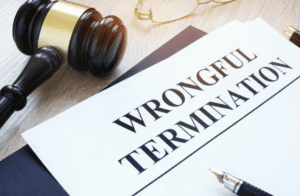 Recently, there have been major changes and updates to the law with respect to pregnancy discrimination. In March of this year, the U.S. Supreme Court decided Young v. United Parcel Service, Inc., creating a test for determining whether an employer has provided adequate accommodations for pregnant employees.
Recently, there have been major changes and updates to the law with respect to pregnancy discrimination. In March of this year, the U.S. Supreme Court decided Young v. United Parcel Service, Inc., creating a test for determining whether an employer has provided adequate accommodations for pregnant employees.
But while Young was being decided, the U.S. Department of Labor’s Office of Federal Contract Compliance Programs (OFCCP) proposed new rules about sex and pregnancy discrimination. And soon after the Young decision, the EEOC released updated guidance on pregnancy discrimination.
This article aims to discuss and summarize the guidance and proposed changes to pregnancy discrimination law that have been announced this year. To put those changes into context, we will review the Young decision first.
Table of Contents
ToggleYoung v. United Parcel Service, Inc.
 Peggy Young worked as a driver for United Parcel Service, Inc. (UPS). After becoming pregnant, her doctor advised she should not lift more than 20 pounds. This was a problem for Young since she was required to be able to lift up to 70 pounds as a part of her job duties for UPS.
Peggy Young worked as a driver for United Parcel Service, Inc. (UPS). After becoming pregnant, her doctor advised she should not lift more than 20 pounds. This was a problem for Young since she was required to be able to lift up to 70 pounds as a part of her job duties for UPS.
Young asked for a light duty position, but UPS refused. UPS provided light duty positions for certain workers, such as those injured on the job or who suffered from a disability recognized by the Americans With Disabilities Act; it did not make such accommodations for those who were pregnant.
After losing her medical coverage and being placed on unpaid leave, Young brought suit alleging UPS’s refusal to provide light duty work to accommodate her violated the Pregnancy Discrimination Act of 1978 (PDA). The PDA states in relevant part:
[W]omen affected by pregnancy, childbirth, or related medical conditions shall be treated the same for all employment-related purposes…as other persons not so affected but similar in their ability or inability to work…
Young argued that UPS should provide pregnant workers with any accommodation provided to any other worker. UPS argued that its policy didn’t discriminate based on pregnancy because it viewed workers without consideration to pregnancy status.
After working its way up to the U.S. Supreme Court, the Court decided both sides had good points.
The Court stated that while UPS wasn’t required to provide the same accommodations for pregnant workers that it provided for all other workers, UPS couldn’t treat a pregnant worker differently than a nonpregnant worker unless it had a really good reason for doing so. The Court also stated that there could be pregnancy discrimination if an employer’s policies significantly burdened pregnant women without a sufficiently strong reason for doing so.
This sounds pretty good on paper, but how will this standard work in the real world? The OFCCP has proposed new rules, and the EEOC has released some guidelines that will hopefully provide some clarification.
For a more in-depth analysis of Young and what it means for employees, read our Huffington Post blog post “Why Young v. UPS Is a Big Win for Pregnant Workers” and the Harvard Business Review article “What Young vs. UPS Means for Pregnant Workers and Their Bosses.”
OFCCP’s Proposed New Rules
The OFCCP drafted and released new rules in January 2015 that apply to covered federal government contractors and subcontractors as well as to federally assisted contractors and subcontractors. The original rules were promulgated in 1970 and are significantly outdated due to subsequent executive orders, case law, and EEOC rules. As a result, there is no one source of law for a contractor to review to decide whether its policies are discriminatory based on sex or pregnancy.
There are several proposed new rules, but the one that applies within the Young v. UPS context is Section 60-20.5(a), which essentially transplants relevant portions of the Pregnancy Discrimination Act of 1978 and inserts them into the proposed new rules. Additionally, it provides examples of how the new rules will apply.
In particular is the example found in Section 60-20.5(b)(5), which states it is unlawful pregnancy discrimination if a contractor were to deny:
…accommodations to a pregnant employee who is temporarily unable to perform some of her job duties because of pregnancy…when such…accommodations are provided…to other employees whose abilities or inabilities to perform their job duties are similarly affected.
Basically, if this new rule applied to UPS and Young before she sued, UPS most likely would have been found to have illegally discriminated against Young. OFCCP even went so far as to explain that a contractor that allows light duties tasks for someone injured on the job (as UPS did) must also provide such accommodations to a pregnant woman (which UPS refused to do).
These proposed new rules are just that, proposed new rules. They have not yet officially become law, but they are expected to become law (along with any potential changes) in December 2015. Even if the portions of the new rule relevant to Young are not accepted into law, these proposed new rules have set the tone for how the government will view future pregnancy discrimination claims.
EEOC’s Enforcement Guidance: Pregnancy Discrimination and Related Issues
 The EEOC released a July 14, 2014 Enforcement Guidance notice, but as a result of the Young decision from the U.S. Supreme Court, the EEOC updated the Enforcement Guidance notice by making slight changes and releasing the June 25, 2015 Enforcement Guidance: Pregnancy Discrimination and Related Issues.
The EEOC released a July 14, 2014 Enforcement Guidance notice, but as a result of the Young decision from the U.S. Supreme Court, the EEOC updated the Enforcement Guidance notice by making slight changes and releasing the June 25, 2015 Enforcement Guidance: Pregnancy Discrimination and Related Issues.
While not having the force of law, an Enforcement Guidance notice reflects how the EEOC will interpret federal law, such as the PDA, in future discrimination claims. An Enforcement Guidance notice provides guidance to employers who may be unsure of the legality of their policies.
Not all of the June 25, 2015 Enforcement Guidance notice pertained to the Young decision. In the parts that did, the EEOC provided the following guidance:
- Evidence of disparate treatment can exist if an employer has a policy that “significantly burdens” pregnant employees and that burden is not “supported by a sufficiently strong justification.”
- Evidence of a “significant burden” on a pregnant employee may include an employer’s accommodation of a large percentage of nonpregnant employees while denying the same accommodation to pregnant employees.
- Normally, a plaintiff can establish a prima facie case for pregnancy discrimination if she can show that she was denied accommodations for her pregnancy even though other similarly situated workers were provided those same accommodations. This burden is lifted if the plaintiff can prove that she was the victim of pregnancy-related animus.
- If an employer is treating a pregnant employee differently than a nonpregnant employee, the excuse that a pregnant employee is more expensive to employ or less convenient to accommodate than a nonpregnant employee is not a sufficiently strong reason for the discriminatory treatment.
- Even if an employer can provide a sufficiently strong reason for the different treatment of pregnant and nonpregnant employees, if the sufficiently strong reason is a pretext for discrimination, the employer will be found to have engaged in illegal discrimination.
- If an employer’s policy has a disparate impact on pregnant employees, the employer then has the burden of showing that the policy was justified due to a business necessity.
Disparate treatment is a legal theory that means if a protected group, such as pregnant employees, were targeted for discrimination, illegal discrimination has taken place.
Within the context of employment discrimination, a pretext is a cover story that would otherwise be a legitimate justification for the discriminatory action, except that it hides the true (and improper) reason for the discrimination.
Disparate impact is a legal theory that means if a protected group, such as pregnant employees, were disproportionally harmed by a pregnancy-neutral policy, there may still be illegal discrimination.
Summing It Up
The Supreme Court in Young concluded that pregnancy discrimination exists if an employer’s policies significantly burden pregnant women without a sufficiently strong reason for doing so.
Under the OFCCP’s proposed rules that apply to government contractors and subcontractors, if an employer fails to provide accommodations to pregnant women that it provides to similarly situated nonpregnant employees (as UPS did in Young), it will have illegally discriminated against its pregnant employees.
The EEOC published the following guidance on pregnancy discrimination in response to Young:
- Evidence of disparate treatment can exist if an employer has a policy that “significantly burdens” pregnant employees and that burden is not “supported by a sufficiently strong justification.”
- Evidence of a “significant burden” on a pregnant employee may include an employer’s accommodation of a large percentage of nonpregnant employees while denying the same accommodation to pregnant employees.
- If any employee can prove pregnancy-related animus, she does not have to show that she was denied accommodations for her pregnancy even though other workers similarly situated as her were provided those same accommodations.
- The excuse that a pregnant employee is more expensive to treat or less convenient to accommodate than a nonpregnant employee is not a sufficiently strong reason for the discriminatory treatment.
- If a sufficiently strong reason for the different treatment of pregnant and nonpregnant employees is a pretext for discrimination, the employer will be found to have engaged in illegal discrimination.
- If an employer’s policy has a disparate impact on pregnant employees, the employer then has the burden of showing that the policy was justified due to a business necessity.





